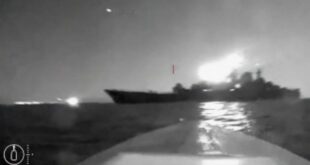Major U.S. universities launched centres dedicated to studying life on — and beyond — Earth

The study of the potential for alien life elsewhere in the universe is ramping up as two major universities in the U.S. have established astrobiology centres.
This is happening amid the excitement over the samples brought back from asteroid Bennu that contain building blocks of life, carbon and water; the James Webb Space Telescope detecting carbon dioxide, water and methane on a distant planet; and the discovery of carbon on Jupiter's icy moon Europa.
The centres have been established recently at the University of Arizona, which led the science team on the OSIRIS-REx sample return mission, and Penn State University. Both are multi-disciplinary institutes that bring together astronomers, biologists, chemists, geologists and even linguists to pore over astronomical data for signs of life on other worlds.
Astrobiology is the field of research that combines many specialties working together, to better understand the potential for life elsewhere, and how life might originate in different places in the universe, including how it appeared on Earth.
This is not a new idea. Many university astronomy departments offer courses in astrobiology, and the California-based SETI Institute has been searching for intelligent radio signals from space for decades. But these new initiatives represent a concerted effort to answer what some consider the most important question in science: are we alone in the universe?
So far, the answer is: we don't know. But the possibilities are endless.

Finding the ingredients of life in space is not proof that life exists out there. A grocery store shelf can hold all the ingredients for a chocolate cake, but the cake does not exist until those ingredients have been put together under very special conditions. That's why many different scientists and experts must come together to determine whether the conditions on an alien world, such as surface temperature, atmospheric composition, availability of water, etc., are right for life to thrive.
Even if all those conditions are met, it is still difficult to prove life exists without going there and landing on the surface. So far, we can only do that with planets in our solar system. Our current rockets are too slow to reach planets around other stars within a lifetime.
In 1990, the late Carl Sagan convinced NASA to use its Galileo spacecraft as a demonstration to try and detect life on Earth.
Galileo was sent to Jupiter on a roundabout flight path that took it to Venus where it got a gravity assist, then back to Earth for a second boost from this planet, giving it enough speed to reach all the way to Jupiter.
This presented a unique opportunity where one of our probes was approaching Earth from afar and made a close flyby of our planet the way we might send a probe to look for signs of life on another world.

Using spacecraft instruments, Sagan and his team were able to detect oxygen and methane in the Earth's atmosphere and see a multi-coloured surface trending towards blue.
The Galileo spacecraft was also able to pick up a narrow band of pulsed, amplitude-modulated radio signals (AM radio), indicating the presence of an intelligent civilization. This, he proposed, is a model for the type of planet that we should look for in space.
So far, some basic ingredients for life have been found away from our home planet, but intelligent radio signals have not been detected despite decades of searching. On the other hand, the universe is very old and we haven't been listening for very long. Perhaps a signal passed by the Earth 80 million years ago when the dinosaurs were here. Or maybe a signal will arrive 100 from now.
If we do find life, a new problem arises: how will we establish contact? The aliens certainly won't speak English or any other human language; this is where the linguists and cultural experts enter the picture to figure out how to communicate in an effective way.
Of course, there is always the possibility that the aliens could come to us. Many reports of UAPs, previously known as UFOs, continue to come in, but it is odd that in the 21st century, where everyone carries a phone with a camera, that there are no clear pictures of alien spaceships. And military surveillance systems that can spot pieces of space junk the size of your fist have somehow missed alien spacecraft zipping around the planet.

Earlier this year NASA conducted an Unidentified Aerial Phenomenon (UAP) study. A panel of experts looked at reports of unusual activity in our atmosphere and concluded that while some are unexplained, none suggest alien visitors from space.
The universe could well be teeming with life. The numbers of stars and planets out there is simply too enormous to think otherwise. And some of that life could be very close, like beneath the icy surfaces of Europa, or under the ice caps of Mars.
But until an alien spacecraft lands at city hall, or we get hold of a strand of alien DNA, a piece of metal made of unearthly alloys or a signal from space saying hello, we will just have to keep searching.
*****
Credit belongs to : www.cbc.ca
 MaharlikaNews | Canada Leading Online Filipino Newspaper Portal The No. 1 most engaged information website for Filipino – Canadian in Canada. MaharlikaNews.com received almost a quarter a million visitors in 2020.
MaharlikaNews | Canada Leading Online Filipino Newspaper Portal The No. 1 most engaged information website for Filipino – Canadian in Canada. MaharlikaNews.com received almost a quarter a million visitors in 2020.







